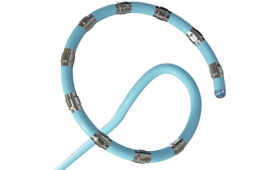 The joining of materials is an important technology in many manufacturing industries. Most products, machines or structures are assembled and fastened from parts, and the joining of these parts may be achieved through rivets, seaming, clamping, soldering, brazing, welding and the use of adhesives.
The joining of materials is an important technology in many manufacturing industries. Most products, machines or structures are assembled and fastened from parts, and the joining of these parts may be achieved through rivets, seaming, clamping, soldering, brazing, welding and the use of adhesives.
With continuing advances in the medical industry, medical devices are becoming increasingly complicated. Such devices are usually comprised of components and materials that must be joined in some way, whether used outside the body, in the case of instruments and surgical tools, or inside the body, for diagnostic or therapeutic purposes.
To create highly reliable devices, one must choose which joining process is appropriate at every step. Many factors influence those choices, from production economics, to mechanical properties such as strength, vibration damping and durability, corrosion or erosion resistance, as well as the ability to correct defects.
Joining processes are typically divided into three categories: Mechanical joining, welding, and adhesive bonding. Medical devices are manufactured using a variety of materials, from metals to polymers to ceramics, and can be joined using all three methods.
Mechanical joining is a process for joining parts through clamping or fastening using screws, bolts or rivets. Advantages of mechanical joining include versatility, ease of use, and the option to dismantle the product in cases where regular maintenance requires it. The ability to join dissimilar materials is another benefit. A drawback of using mechanical joining is the lack of a continuous connection between parts, because the joint is achieved through discrete points. Also, holes created for joining are vulnerable to fractures and corrosion.
Welding includes fusion welding, brazing and soldering, and solid-state welding. In fusion welding, melting and solidification occur in the zone being joined. For metals and plastics, both the work pieces and the filler material experience melting. Brazing and soldering join materials by adding a melted filler material between the joined surfaces. Solid-state welding requires no melting of base of filler materials, because it only involves plastic deformation and diffusion.
Adhesive bonding joins parts using bonding chemicals. This process may be used to join polymers and polymer-matrix composites, as well as polymer-to-metal, metal-to-metal, and ceramic-to-metal. In this method of joining, joints can withstand shear, tensile and compressive stresses, but do not have good resistance to peeling.




